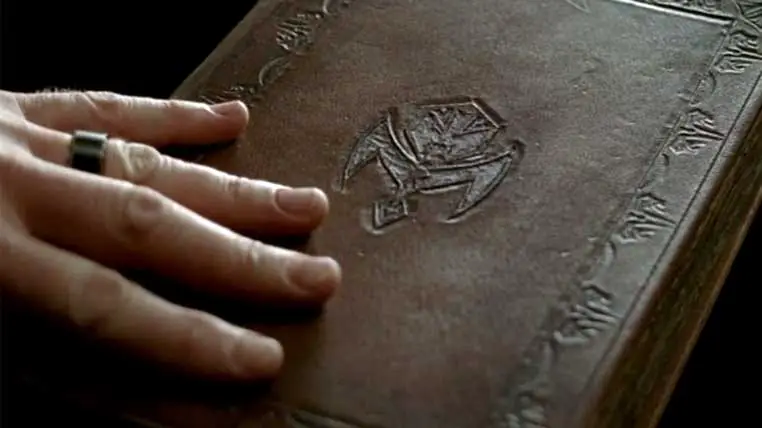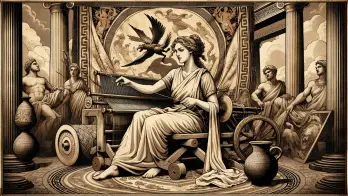The co-authors, a mother and her son, were from an ancient family with roots dating back to 3000 BC.
They dedicated their lives to documenting the supernatural world, including age-old myths, occultism, witchcraft, and inexplicable phenomena.
The Scriptures of Delphi
The knowledge they amassed was meticulously preserved and passed down through generations, culminating in the compendium of chapters known as “The Scriptures of Delphi.”
Although many dismiss vampires as fantastical creatures, some argue they are real and walk among us.
These individuals tend to be secretive, forming covens and presenting evidence to support their claims. While there is no concrete evidence to prove or disprove their existence, interacting with them, even in the virtual world, can be a gripping experience.
“The Scriptures of Delphi” contain a variety of chapters, including the “Taurus Myth” and “The Mythology of Cancer.”
However, “The Vampire Bible” chapter is particularly interesting as it recounts one version of the early history of vampires and their origins.
It is crucial to remember that “The Scriptures of Delphi” are works of mythology and should not be taken literally. Nonetheless, it is believed that some elements of truth exist within these stories.
The vampire origin story
One significant fragment of “The Scriptures of Delphi” is “The Vampire Bible,” which is entirely devoted to vampires.
It includes the tale of Ambrogio, a young man seeking adventure beyond his humdrum life in his village, who sets out for Delphi, Greece.
At the Temple of Apollo in Delphi, Ambrogio encounters Pythia, the oracle of Delphi. Curious about his destiny, he asks her if he is destined to become a great hero.
However, Pythia’s answer is unsettling: “A curse. A red moon. Spilled blood.”
Disturbed by the oracle’s words, Ambrogio spends the entire night trying to decipher their meaning. The following morning, a beautiful woman named Selene appears before him, dressed in a white silk veil.
Ambrogio is smitten with Selene’s beauty and follows her to an altar dedicated to the god Apollo, where he learns she is one of the sun god’s handmaidens.
Ambrogio and Selene quickly fall in love, and he proposes marriage. She accepts, and they decide to leave Delphi and return to his hometown for the wedding ceremony.
The first curse
Unbeknownst to Ambrogio and Selene, their love had also captured the attention of Apollo, the Sun God.
Furious that a mortal had dared to seduce one of his handmaidens, Apollo unleashed a dreadful curse upon Ambrogio: he could no longer bask in the sun’s warmth, for even the slightest ray would scorch his skin with excruciating burns.
“The Vampire Bible” chronicles the immense despair that descended upon Ambrogio as he realized the gravity of the curse. In his grief, he struck a bargain with Hades, the god of the Underworld.
Hades, cunning as ever, offered the couple refuge in the Underworld, safe from both the wrath of Apollo and the punishing sun. But his offer came with a stark condition: Ambrogio must steal the silver bow of Artemis, the goddess of hunting – a formidable weapon Hades greatly coveted.
To aid Ambrogio in his quest, Hades gave him a plain bow and 45 wooden arrows, instructing him to hunt a single animal every morning, before sunrise, for 45 consecutive days. The creature’s blood would then be used as an offering on the altar of Artemis.
If Ambrogio completed this mission, he would be granted one wish from Artemis, who was bound to reward him with the coveted silver bow.
However, in exchange for Hades’ assistance, Ambrogio’s immortal soul would be held as collateral in the Underworld until the task was done.
For 44 mornings, Ambrogio hunted a swan, using its blood to write a love letter to Selene before leaving it on the steps of Apollo’s Temple. Then, he offered the bird as a sacrifice to the goddess of hunting at her altar.
But on the 45th day, overcome with the anticipation of being reunited with his beloved, Ambrogio missed his shot and the bird flew free. Devastated, he fell to his knees, cursing the gods who had inflicted this cruel fate upon him.
Moved by his anguish, Artemis appeared before Ambrogio and gifted him her silver bow and a single arrow. Ambrogio could hunt down the final creature with this arrow to complete the ritual offering to the goddess.
The second curse
Notwithstanding, Ambrogio breached the goddess’s trust. Having seized possession of the much-coveted bow, the youth threw the arrow away and attempted to flee back to the underworld realm of the god of death.
Upon realizing she had been deceived, Artemis inflicted a devastating curse upon the mortal, causing the metal used to forge the bow to scorch his skin and flesh down to the bone.
Immediately, Ambrogio tossed the silver bow and collapsed to the ground, drenched in blood and severely burned. In excruciating pain, the young man recounted the entire tale to the goddess and beseeched her to end his suffering.
Stirred by the tragic story of the star-crossed lovers, Artemis granted him a new understanding in return: the goddess offered to make Ambrogio immortal.
He was to metamorphose into a peerless hunter, swifter and stronger than any other creature. Artemis made him with sharp fangs and claws to tear apart his prey. However, while he could keep his human form, Ambrogio acquired an insatiable thirst for blood.
Artemis urged Ambrogio to depart from Greece with Selene and seek sanctuary in the remote East. There, the two lovers should revere only she, Artemis, and no other deity until the end of their days on this earth.
Ambrogio agreed to the conditions imposed by the goddess.
That night, he killed a black swan and used its blood to pen a final letter to his beloved, urging her to meet a certain captain and pay for passage to Ephesus, Turkey.
In the ship’s hold, Selene would find an olive wood coffin that she was to protect with great care, without opening the lid until the vessel reached Ephesus.
Within the coffin, Ambrogio was shielded from the lethal rays of the sun and the searing touch of silver.
According to “The Scriptures of Delphi” and “The Vampire Bible,” the pair lived peacefully for many years, far removed from sunny Greece, in the distant East, a frigid and somber land where the sun’s rays were as scarce as smiles on the faces of the locals.
Years elapsed, and Selene aged, while Ambrogio, the soulless one, the immortal, retained his youthful appearance. When the time came for his beloved Selene to depart the realm of the living, Ambrogio implored Artemis.
The goddess appeared and informed him that if he wished Selene to remain with him indefinitely, he must imbibe her blood, as he did with the animals he hunted night after night.
The young man complied, and miraculously, Selene regained her vitality, youth, and former beauty.
As per “The Bible of Vampires,” the two became the first vampire couple, eventually giving birth to many others like themselves.
Are The Scriptures of Delphi real?
“The Scriptures of Delphi” and “The Vampire Bible” offer a unique perspective on the supernatural world, providing insight into the myths, legends, and creatures that have captivated our imaginations for centuries.
The authenticity of “The Scriptures of Delphi” is intensely debated. While evidence suggests that the document was produced by a mother and her son in the 1700s, some argue that the contents are purely fictional and lack historical accuracy.
Others maintain that “The Scriptures of Delphi” contain valuable insights into the supernatural world, including myths, legends, and accounts of inexplicable phenomena.
But how does one establish what is considered “legitimate” or “real” concerning mythology?
“The Scriptures of Delphi” possess the physical reality of texts written at any other point in history. An author has penned each written word; hence, who determines whose words are significant and whose are not?
If “The Scriptures of Delphi” are, in fact, real stories that have been passed down orally through generations since ancient times, then they are as old as the tales transcribed centuries ago.
At best, they represent vanished myths from ancient times, and at worst, they are fables and fairy tales born from mythical tradition.
The truth is, we will never truly know how accurate “The Scriptures of Delphi” or “The Vampire Bible” are, but is this not also true of all mythology?
At Ancient Theory we only use trusted sources to document our articles. Such relevant sources include authentic documents, newspaper and magazine articles, established authors, or reputable websites.
- Stephanie Demetrakopoulos - Vampire Craft: The Vampire Book of the Ancients. CreateSpace Independent Publishing Platform, 2013.
- Dimitris Papanikolaou - The Vampire in Folklore, History, Literature, Film and Television: A Comprehensive Bibliography. McFarland & Company, 2015.
- Matthew Bunson - The Vampire Encyclopedia. Three Rivers Press, 1993. [Source]
- Theresa Bane - Encyclopedia of Vampire Mythology. McFarland & Company, 2010.
- Prudence Jones and Nigel Pennick - A History of Pagan Europe. Routledge, 2011. [Source]






